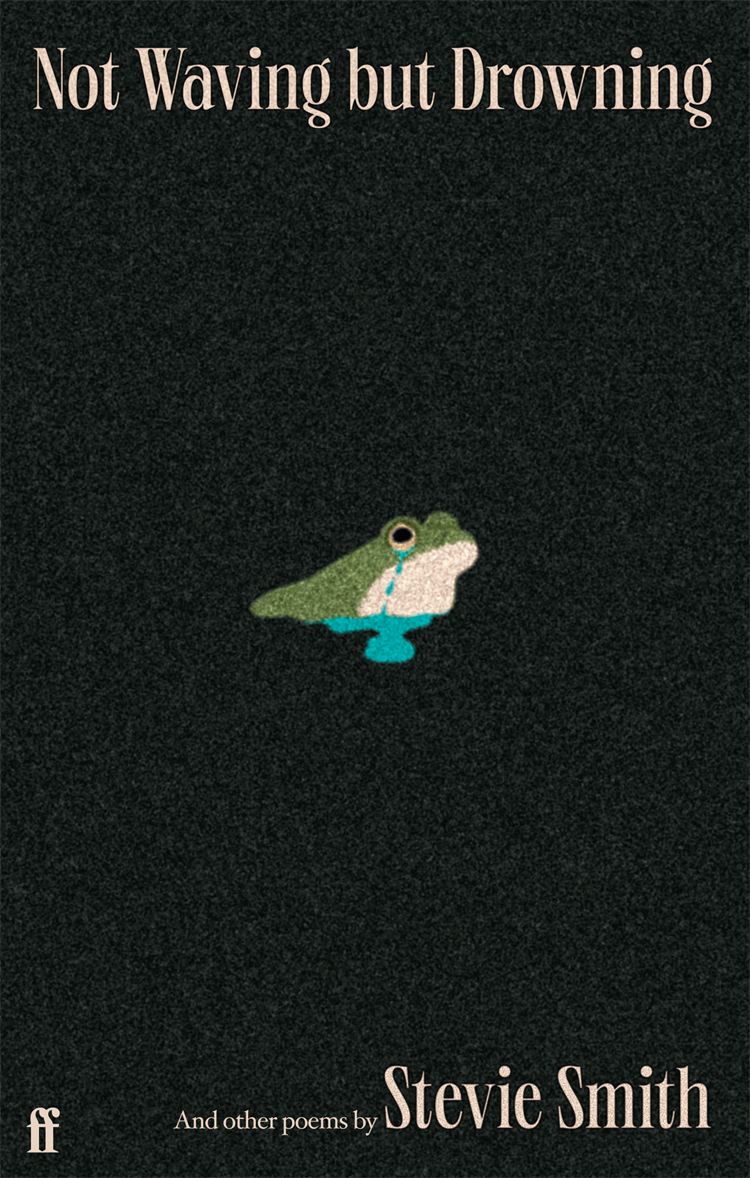Last year, Wendy Cope’s poem, "The Orange", went viral on TikTok. I’m not totally certain how a poem goes viral, but it did – and there’s nothing we can do about it.
In fact, Faber & Faber actively did something about it and released a selection of Cope’s poems in a slim, transportable volume: perfect commuter fodder. It turns out that this was the beginning of a series, and we now have a similarly slim and comparably portable selection of Stevie Smith poems, gathered under the title of her most well-known work, Not Waving But Drowning.
Of course, we only have two in the series so far, but it still leads one to wonder in what way – by what means – have these two writers been yoked together. Perhaps it is that they’re both simply "Faber Poets", or because they’re both 20th-century female writers. What worries me slightly is the possibility that a claim is being made about some sort of aesthetic kinship, that they are the same kind of writer. On the surface this may appear to be true: both writers prefer a short-form verse of pith and wit; both think through cultures of shallowness to imply hidden depth; both are alluringly aphoristic. But this, for me at least, is where the kinship ends: on the apparent.
 Cope recently told The Times: "If you want people to enjoy poetry, then it's kind of nice to write poems they can understand." This statement is damaging to poetry and the public mind for myriad reasons – too many, in fact, to list here. But a couple will do for now. First: it’s incredibly patronising. Such words rest dangerously on the assumption that people don’t want to learn or be challenged, which also carries the even more worrying implication that they shouldn’t. Why ought a poem be anything other than an enjoyable little ditty? Who wants literature to appear alien or difficult or in any way strange? This philosophy resembles, at best, what Roland Barthes called "tautological reading": a reading that simply – and pointlessly – confirms what we already believed; at worst, it is what TW Adorno called "the word coined by commerce": a sellable consolation and a cultural dead-end.
Cope recently told The Times: "If you want people to enjoy poetry, then it's kind of nice to write poems they can understand." This statement is damaging to poetry and the public mind for myriad reasons – too many, in fact, to list here. But a couple will do for now. First: it’s incredibly patronising. Such words rest dangerously on the assumption that people don’t want to learn or be challenged, which also carries the even more worrying implication that they shouldn’t. Why ought a poem be anything other than an enjoyable little ditty? Who wants literature to appear alien or difficult or in any way strange? This philosophy resembles, at best, what Roland Barthes called "tautological reading": a reading that simply – and pointlessly – confirms what we already believed; at worst, it is what TW Adorno called "the word coined by commerce": a sellable consolation and a cultural dead-end.
Second: I am a person who enjoys poetry. Am I, then, included in Cope’s blithe definition of "people"? Who are "people"? "People", in Cope’s eyes, seem to be potential customers. It is the same as her understanding of "understanding": problematically uncomplicated and undiscerning. Forgive me, but someone who identifies as a poet ought to be more attentive to the nuance – and the danger – of what they say, particularly when it comes with such serious influence. "People" are not a single heterogenous mass, despite what Cope might think; "they" are more complicated and diverse than her imagination permits. It is not good enough to be "kind of nice", as she desires. There is, in my opinion, too much at stake.
I admit a slight digression, but it’s important, when poets are being grouped together in some way, to attend to the curation with a serious critical eye. This is especially important when the series must be, by virtue of the Cope-Smith juxtaposition, a reading of the latter’s work. I think this is to misunderstand Smith, who is much more discerning, unnerving, and evasive than Cope, and who thinks more highly of her reader. Where Cope wields popular wit, Smith is the faux-naif Scapino: we are made to give chase, not sit comfortably.
Take, for instance, the exemplary "Pad, pad". Comprising just two stanzas, it starts in the meter of limerick:
I always remember your beautiful flowers
And the beautiful kimono you wore
When you sat on the couch
With that tigerish crouch
And told me you loved me no more.
At first glance, we are amused. But Smith rewards a longer look, and, here, the particular rhythm of limerick, at once childish and adult (limericks famously cover both), sets the scene for a meaningful rug-pull, as we move into the second stanza: "What I cannot remember is how I felt when you were unkind." Suddenly, we meander, perhaps mutter, edging on prose. In jarring the second form against the first, Smith finds a way to think through – and simultaneously complicate – the modes and failures of memory: the limerick is a mnemonic device, a way of recalling clearly ("I always remember"); but it also rings a little false, masking or distracting some annihilated pain ("What I cannot remember"). The rhythmic collapse of the second stanza performs a count-pointed doubtfulness, at once truer and unknowing.
Even more brilliant is Smith’s illustration, thankfully included in Faber’s new selection, which shows this tigerish woman on her couch, and a forlorn, be-suited man slightly below, deftly spacing out the fraught hierarchies of memory. As the preface tells us – a comment by the poet on her compositional process – very often the pictures preceded the poems, calling into the doubt the power-dynamics of artwork and illustration, poem and caption, text and paratext, and fashioning a sort of endless relay between forms of representation and their dialogue. The fact that Smith would often write in this counter-intuitive way tells us much about her deeply subtle poetics. Whatever simplicity appears is at best a first impression – and we know to mistrust those.
I can’t find any evidence that Smith has been "trending", but perhaps she has, and perhaps this is the reason for her inclusion in the series. It is curious, because there have been many editions of Smith, including a great selection made by Hermione Lee as recently as 2019; and then there is Will May’s expertly edited – though less portable – Collected Poems and Drawings, from 2013. This still stands as the high watermark for Smith editorship. Our new selection is rather enigmatic: there is no introduction or editorial rationale. This could be for brevity’s sake, and Faber knows already that Smith doesn’t really need introduction; instead, they just want to give us a neat and nifty edition, easy to carry around and fitting the rhythms of commute. They’ve certainly done this, and in a nicely affordable volume. But carrying Smith around is rather like having a hole in your pocket. Any serious reader will soon realise that her small poems are by no means short: they are weirdly excessive objects, full of bathetic voids, whispered implications, evasive centres. Real enjoyment doesn’t come with immediate understanding, but with hard work: it’s kind of nice to try.
- Not Waving But Drowning by Stevie Smith (Faber & Faber, £10)
- More book reviews on theartsdesk















Add comment